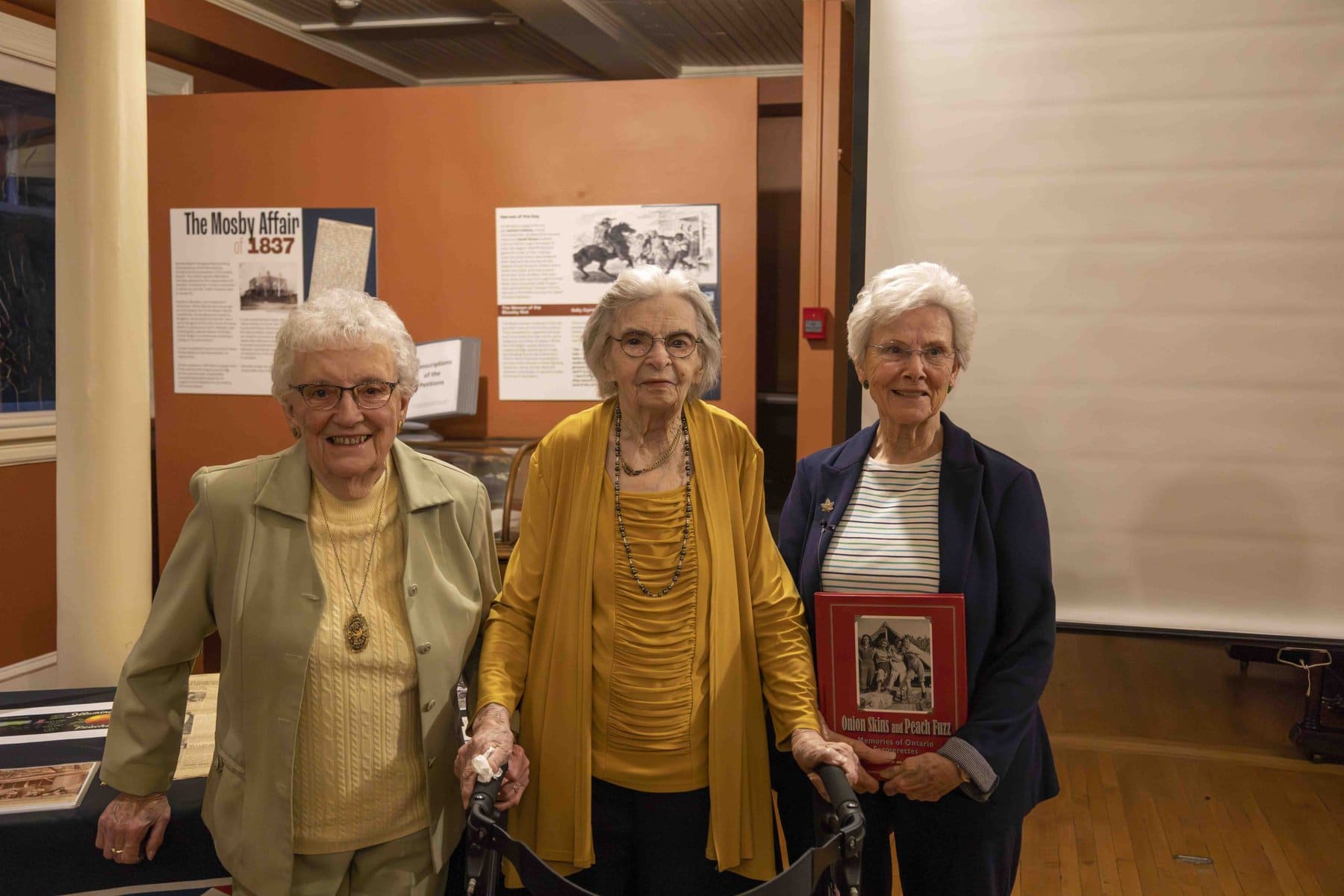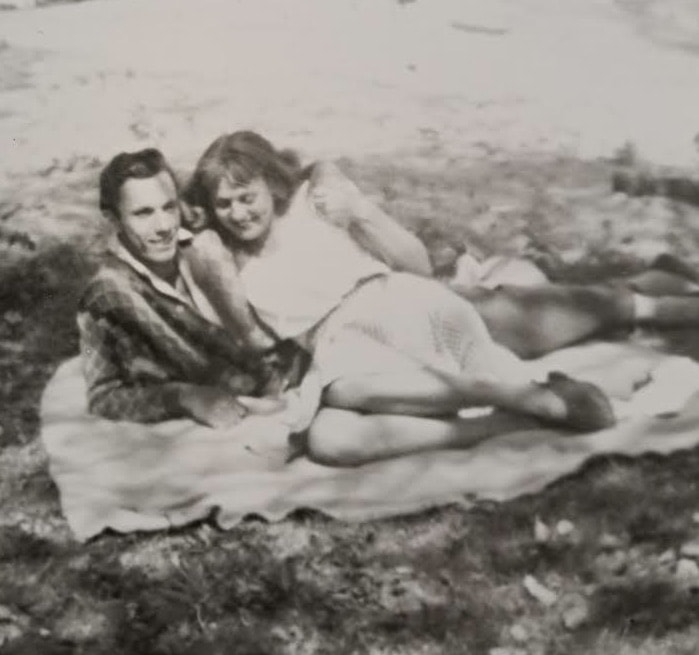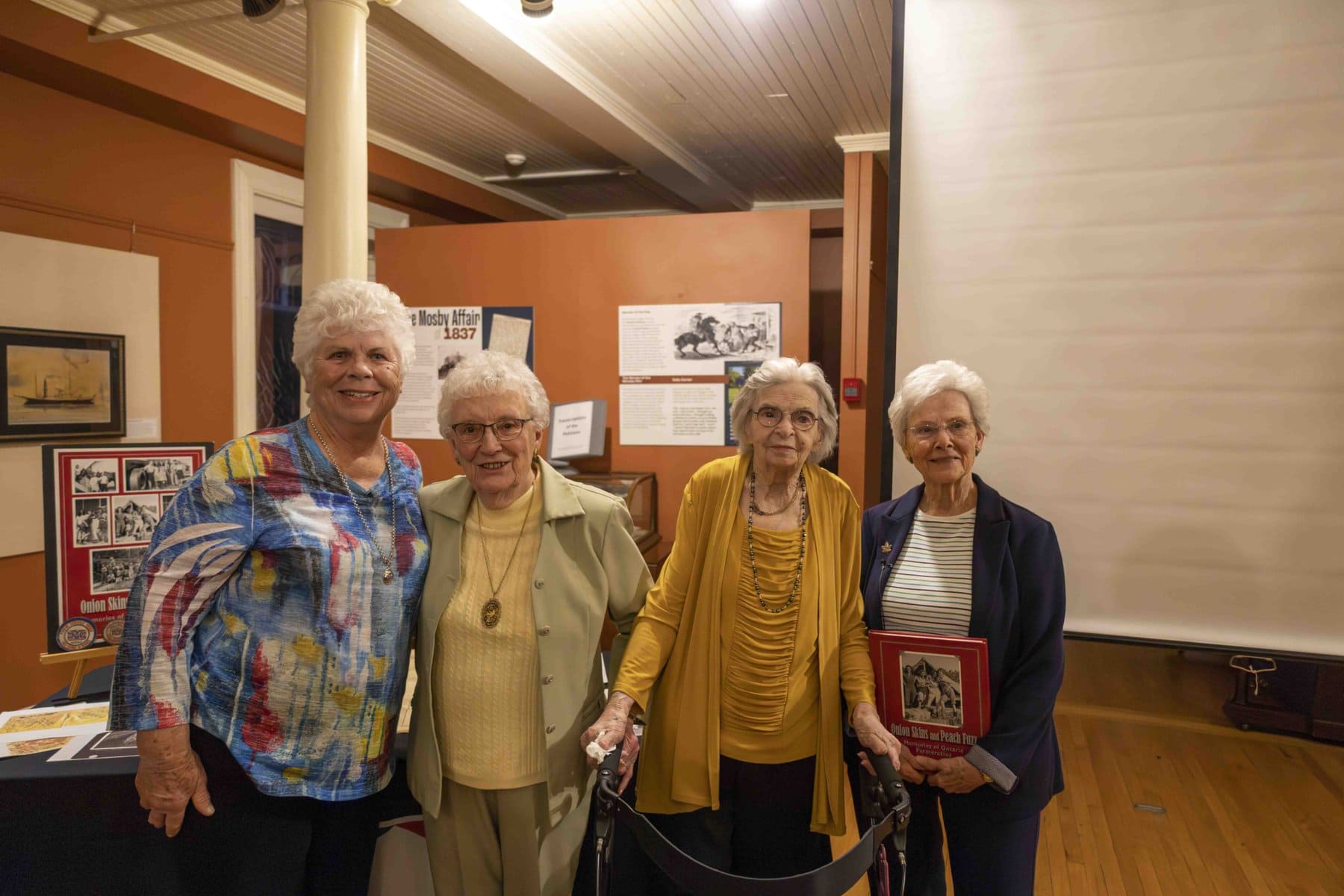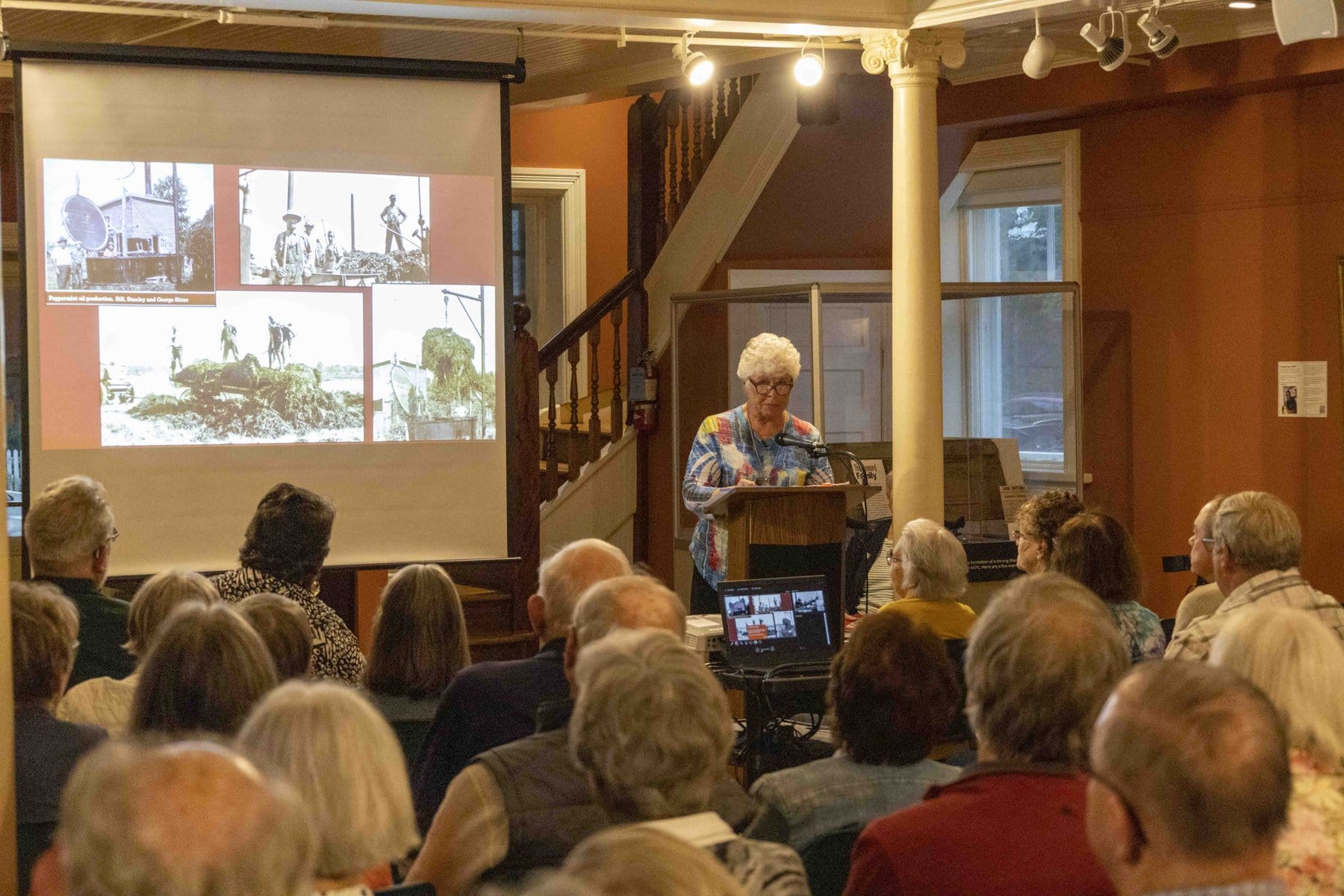Niagara-on-the-Lake resident Steven Gregg couldn’t help but tear up when he heard his parents’ love story recounted to the audience at the NOTL Museum last Thursday.
“It’s kind of surreal to just walk out of my house and come to a presentation like this,” he said.
Gregg’s parents met while his mother was working as one of the thousands of women farmers who stepped up to maintain Ontario’s crops during the Second World War.
Her story and many others were the subject of a presentation the museum hosted about these women, called the “farmerettes.”
Bonnie Sitter and Shirleyan English, co-authors of the new book “Onion Skins and Peach Fuzz,” read aloud letters and experiences from their book, describing the experiences of these farmerettes.
In 1941, the Ontario Farm Service Force established the Farmerettes program, which encouraged girls aged 16 to 18 to work in the fields during the summer.
This came at a time when thousands of men’s lives were lost during the Second World War.
In the book, dozens of farmerettes tell their story accompanied by more than 200 photos.
The audience got a few surprises along the way, like the never-before-heard love story of Gregg’s parents, Dorothy Chantler and Stanley Gregg, written primarily by Steven Gregg’s sister, Brenda Murray.
Greggs’ mother worked as a farmerette with her best friend, Carmen, in Kingsville in 1946 – the same year his father worked at Camp Harrow.
“On the morning of July 3, 1946, he and his team were assigned to work for the day at the same potato farm with our mother and Carmen,” Sitter read to the crowd.
The letter describes the first time his mother saw his father and how she called dibs on the “tall, handsome one.”
They met that morning for the first time, a meeting his dad described as “two sweet potatoes in a bag.”
They spent the summer together, often spending their weekends dancing.
Their favourite song was “Day by Day” by Doris Day, a song that kept the two connected even when apart, said Sitter.
Murray told The Lake Report that her parents had nicknames for each other — her father went by “Nats,” Stan spelled backwards, and her mother went by “Dimps” because of her “incredible dimples.”
This was just one of many stories told that night about Ontario’s farmerettes.
However, the story of the two women who wrote the book is full of just as much intrigue.
One day Sitter found a small photo of three farmerettes and, not knowing who they were, decided to do some research.
After learning about the thousands of young girls who helped put food on the table during the Second World War, she wrote an article for a farming magazine called The Rural Voice in Blyth, Ont.
English wrote a letter to the editor after reading Sitter’s article.
Not only was English a former farmerette, but she worked at Sitter’s in-laws’ farm — and even dated one of her in-laws.
To this day, English describes that time as one of the best summers of her life.
“We were very close to the cadet camp, so they were allowed to come one night a week,” English told The Lake Report.
“We took out the jukebox (and) we danced the night away and everything,” she added.
Sometimes, she said, the girls would sneak out late at night and even remembers a particular time when she did.
“We managed to sneak back in (but) because the car broke down we didn’t get back to the camp till seven o’clock in the morning,” she said.
At 7:15 a.m., the alarm to wake up went off — after pulling an all-nighter, she was back in the field, working.
Two other farmerettes made the trip to NOTL for the presentation and to hear their stories read out loud.
Cathryne Horne, a farmerette in 1947 in St. Catharines, was one of them.
She told The Lake Report about one of the photos Sitter shared of her and her friends – the photo showed them posing for a photo by the water.
But there’s more to the story: they had gone skinny dipping when a reporter from the St. Catharines Standard showed up looking for a photo for the paper.
“We all looked like we were half put together,” she said with a laugh.
She worked at one of the Tregunno Camps in the northern part of St. Catharines and described in her letter how the farmer, Mr. Troup, would pick them up in the morning. They’d sit with their legs dangling from a flatbed trailer.
Her letter described in detail how difficult and back-breaking the job could be, and how much she made at the time.
“I know I made $10 a week clear after paying room and board for $4.00 a week,” reads the letter.
Many farmerettes made $0.25 an hour, which was the going rate at that time.
Horne told The Lake Report that many years later she and her husband bought a lot in St. Catharines, where they built a house to live in with their two sons.
It wasn’t until one day when she went for a walk by the Welland Canal that she realized only two houses down from her home was where she worked as a farmerette.
She still lives there to this day.
Sitter and English showed dozens of photos of the farmerettes, including photos of them out in the fields and sitting on tractors.
“If there was a tractor on the farm, they had to have a picture taken with the tractor to prove you’re on a farm,” said Sitter.
There were also a few photos of them hitchhiking, which was a popular way to get around during that time.
“They would hitchhike into town for just a sundae or an ice cream cone, anything to try something different,” said Sitter.
To spread the message about the farmerettes, Sitter is trying to get Canada Post to issue a stamp honouring Ontario’s farmerettes.
The book was also adapted into a play by 4th Line Theatre in Millbrook, Ont. Next, it’ll be on stage at the Blyth Festival Theatre in 2024.
Sitter also has another important project in the works — a documentary.
“I needed to raise $25,000 because we’re going to do a film documentary about these ladies while there’s still faces and voices to record,” said Sitter.
She’s looking for sponsors that are willing to work together on this project.
To buy the book or reach out to Sitter, email bonnie.sitter@gmail.com.













